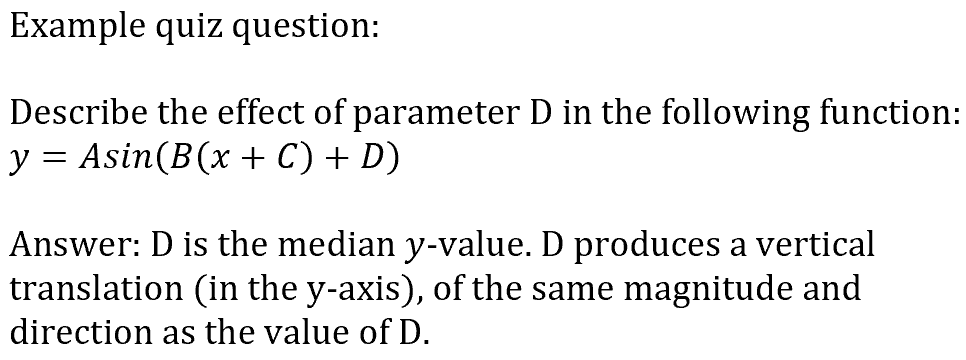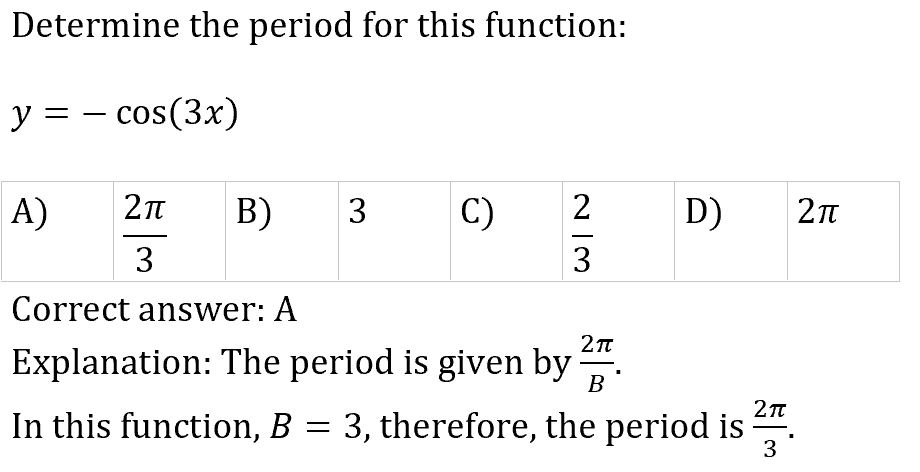Using digital technologies to assess students' understandings of trigonometric functions
- Nadine Dunstone

- Oct 4, 2020
- 2 min read
This blog post will look at approaches to formative and summative assessment of students' understandings of trigonometric functions, using digital technologies.

Formative assessment approach utilising technology:
The beauty of an inquiry approach using desmos is that the task itself is formative (Alexander, 2012). The artefact that students build within desmos , with sliders for the parameters in trigonometric functions, can be used by the students formatively. In the lesson, students are encouraged to make predictions about how the shape of the graph will change as the parameters are manipulated, and then they test their hypotheses using the sliders (Bower, 2017). Below is an example of the product students will produce to use in their inquiry.
Once students have completed their inquiry by developing the rules that describe how each of the parameters change the shape of the function, they will conduct a formative quiz in pairs, testing their knowledge.

Formative peer learning: Each pair will be given a short quiz sheet. An answer page will be distributed to each student's quiz tab on OneNote. In each pair, students will be assigned A or B.
Student A will ask the questions
Both students will write their answers (independently) in their own OneNote page using their stylus.
Once both students have recorded their answer, the student B will open the DESMOS function created in the lesson and move the slider for parameter D.
Both students will see the effect of the parameter to check their answer.
Using a different stylus colour, students mark answers. If incorrect, write the correct answer underneath.
At the conclusion of the quiz, clearly write the quiz mark.
Once complete, teacher locks the answer page to prevent students from changing answers.
Teacher to review quizzes using "review student work" function in OneNote.
Next, students work on questions from the textbook on interpreting and sketching trigonometric functions. Once students have had the opportunity to use and consolidate their learning a second quiz will be conducted. The next formative assessment task is a thoughtfully written multiple choice quiz with carefully designed "distractor" options targeting common misconceptions. Questions will be similar to the question below:

The quiz is run using a Socrative (paid) account. It is possible to use the free version, however, at US$60 for a year, I feel it is worth trying it out for the year. With the paid subscription, teachers can control more aspects of the test, improving reliability. The quiz will be run using the following features:
Require login with student ID
Randomise question order
Restrict students to only one attempt
Instant feedback, with correct response and explanation after each question (Bhagat & Spector, 2017)
Live tracking and instant grading
Automatic data-visualisation of results.
Summative assessment approaches utilising technology
The summative assessment task will be a Problem Solving and Modelling Task (PSMT) requiring students to design a logo using a combination of functions and relations, and including at least one trigonometric function. The task is to create a logo using desmos or some other digital technology, and to show mathematical working to express the solution as a piecewise relation, together with the desmos output.








Comments